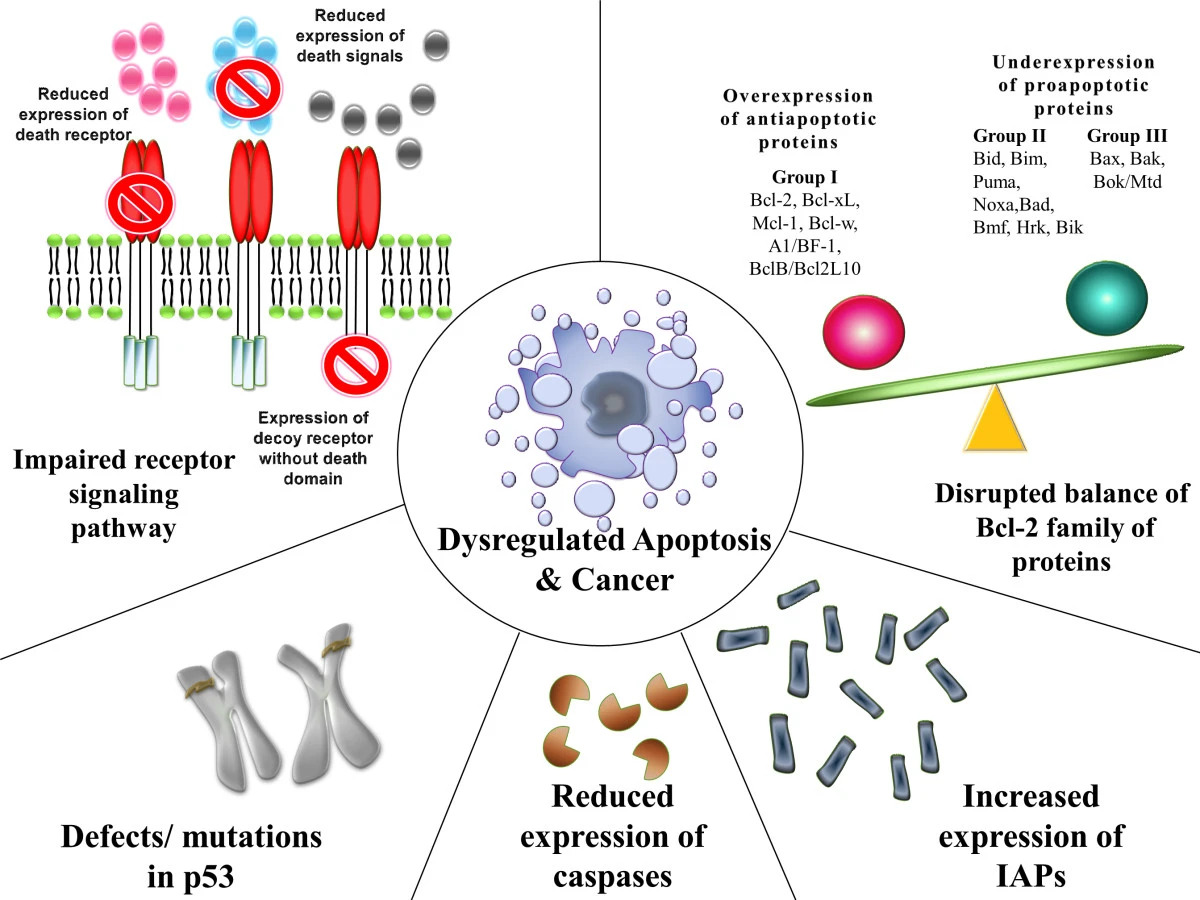Playlist
Show Playlist
Hide Playlist
Normal Cell Cycle
-
Slides CP Neoplasia Cell Cycle.pdf
-
Reference List Pathology.pdf
-
Download Lecture Overview
00:00 Hi, welcome back. This next talk is going to look at the cell cycle. How normal cells turn over, it's important that we understand this so that when we talk about mutations or defects in cell cycle regulation, we'll know where we are. So here we are kind of on a roadmap, the first talk was all about definitions and making sure we're on the same page exactly what cancer is. Now we're going to talk about the cell cycle. For me, many of the details of the cell cycle make me think of this. It's bewildering, there are so many forward feedback mechanisms, backward feedback mechanisms, different proteins interacting with each other. You're not intended to see any of that other than a whole bunch of dots and circles and lines connected to one another and that's where the cell cycle can feel. We'll try, however, to make this more straightforward. We won't be talking about every single detail, but we're going to be talking about the big picture and many of the proteins that are in this pathway you do need to know about. So bear with me, it won't look like this when we're done but it will feel like this as you think about it. So let's look at the cell cycle in a somewhat simplified way. We're going to look initially at continuously cycling cells otherwise known as labile cells. These are cells that are constantly in cell cycle that include the skin, GI epithelium, hematopoietic cells. In order to grow, you have to give the cells a growth factor, we have to give them an initial stimulus and that gets us into the G0 phase. 01:46 So we're going to replicate proteins, we're going to replicate organelles, we're going to get everything ready to replicate the DNA. There is an initial point, however, where we no longer need that growth factor in order to go through the cell cycle. We have revved up everything that we need, all the synthetic machinery and now at that restriction point which is indicated there, we no longer need growth factor. The cell has committed itself to proliferating. However, before we actually make all new DNA, before we replicate our genome, we're going to check to make sure that the blue print, the genetic material is correct, that there are no mutations. That's the G1S checkpoint, that's the point between the growth 1 phase and the synthetic phase. If everything is kosher at that point, we will go in to the synthetic phase, we will duplicate all of our genetic material. We will have said that the blueprint is accurate, correct, and we duplicate it. Okay, that's the entire synthetic phase. Then we enter in to the 2nd growth phase, we are getting ready. 02:55 We're making additional now proteins, organelles, etc. in preparation for actually undergoing mitosis. At the end of that G2 phase, growth phase, we are going to check and make sure again that all the DNA is accurately transcribed, that we have made perfect copies of the original blueprint. And that is another checkpoint, the G2M checkpoint. So from the growth phase 2 into the mitotic phase, the M phase we're going to check. If everything is kosher at that point, then we're going to allow the cell to undergo mitosis and we will get 2 daughter cells and we may continue again in the cell cycle if you are a labile cell or we may drop out and just say "You know, we're fine, we're good, we've replicated and so you can exit the cell cycle." Now, if you are a quiescent or an otherwise stable cell such as in hepatocyte or renal tubular epithelium or endothelium, you normally sit in G0, you're not in active cell cycle. But with the appropriate stimulation, I can kick you in to that cell cycle and you go through exactly the same round of going past through restriction phase, going through the G1S checkpoint, going through the synthetic phase, going through the 2nd growth phase, going through that G2M checkpoint, and then you come back out as a quiescent cell unless you're stimulated again. Okay, so we dealt with labile cells and stable cells in a simplified kind of sense of the cell cycle. If you are permanent cells, you have forever and ever and now exited this pathway, you are no longer going to be able to replicate. And these permanent cells are myocytes and neurons, classic examples. They're not going to be able to be kicked back in the cell cycle no matter what you do.
About the Lecture
The lecture Normal Cell Cycle by Richard Mitchell, MD, PhD is from the course Neoplasia.
Included Quiz Questions
What type of cell is quiescent?
- Hepatocytes
- Neurons
- Cardiac myocytes
- Epidermal cells
- Epithelial cells of the GI tract
During which phase is DNA duplicated?
- S phase
- M phase
- G1 phase
- G2 phase
- G0 phase
Customer reviews
5,0 of 5 stars
| 5 Stars |
|
5 |
| 4 Stars |
|
0 |
| 3 Stars |
|
0 |
| 2 Stars |
|
0 |
| 1 Star |
|
0 |




